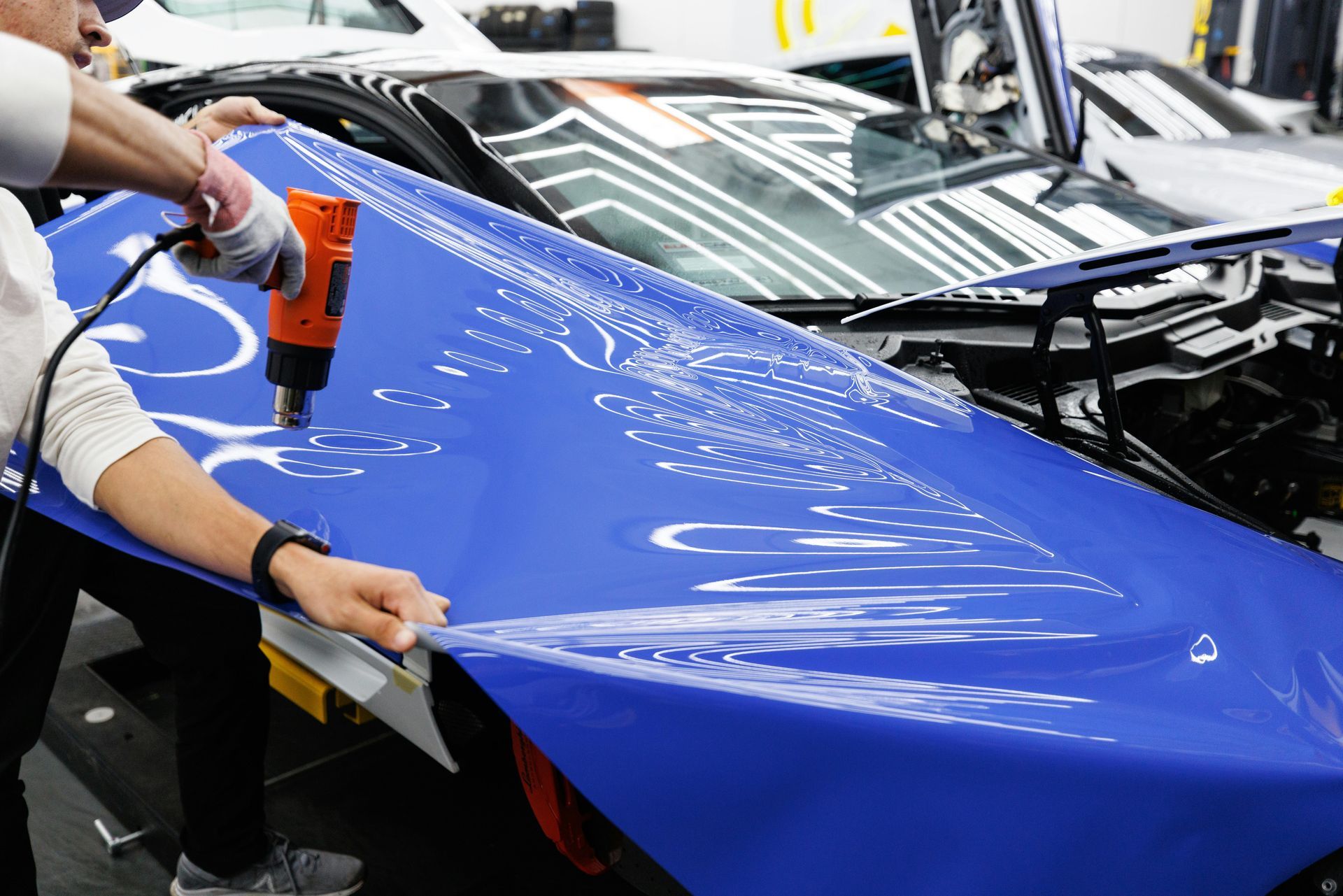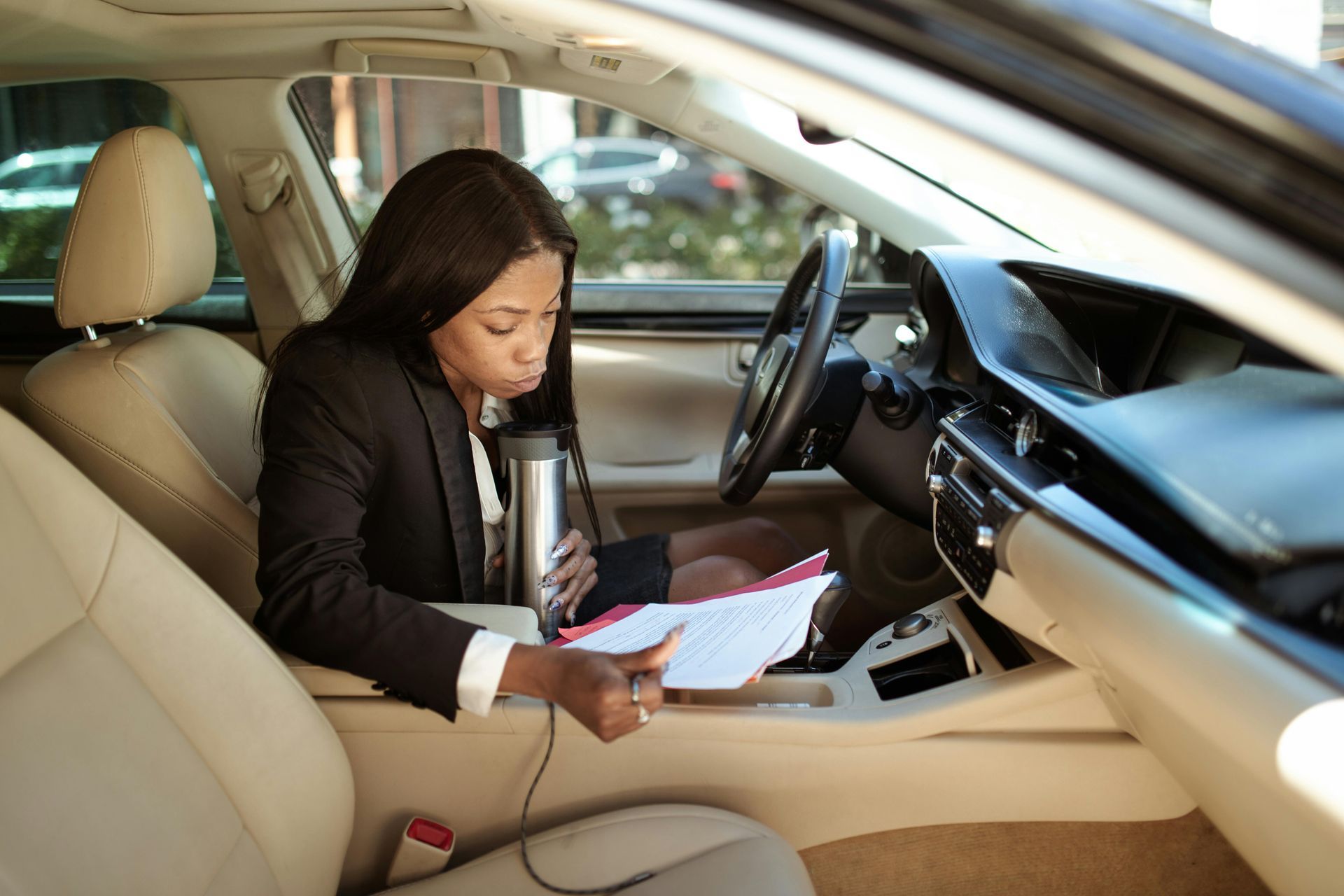Everyday Car Problems: Quick Fixes and Expert Tips to Manage Them
May 6, 2024
Quick Fixes for Everyday Car Problems: Stay on the Road with Confidence
Every car owner knows that car problems can pop up when you least expect them. But don't worry! Most issues are common, and knowing how to handle them can save you a lot of stress. Cars can have many problems, but some happen more than others. Regular checks and keeping your car clean can help prevent these problems. We’ll look at what these common issues are and how you can avoid them.
Electrical Problems
Electrical problems are among the most frustrating issues a car owner can face. From a dead battery to faulty alternators and starters, these problems can leave you stranded and in need of immediate assistance. Let's delve deeper into these electrical woes and explore how to address them effectively.
Dead Battery: What to Do and How to Prevent It
A dead battery can leave you stranded, especially in extreme weather. Regularly checking your battery can help prevent this issue. If your car won't start, you might need to jump-start the battery. Here's how:
- Get Cables and Another Car: Find jumper cables and a vehicle with a working battery.
- Connect the Cables Correctly: Attach the red cable to the positive terminal and the black cable to the negative terminal.
- Start the Working Car: Turn on the working car's engine.
- Try to Start Your Car: Turn on your car's engine and see if it starts.
Faulty Alternators and Starters: Signs and Solutions
If your car starts but dies immediately, or if you hear strange noises when starting the engine, your alternator or starter might be faulty. Here's what to do:
- Identify Symptoms: Pay attention to signs like the engine starting but immediately dying or unusual clicking or grinding noises.
- Seek Professional Help: Diagnosing and fixing alternator or starter issues usually requires a mechanic's expertise. They can run tests to pinpoint the problem and recommend repairs.
By being proactive and addressing these electrical issues promptly, you can keep your car running smoothly and avoid unexpected breakdowns on the road. Remember to perform regular maintenance checks to prevent future problems.
Tire Problems
Tires play a critical role in vehicle safety, and understanding how to manage wear and tear is essential for every driver. Let's delve into the fundamentals of tire maintenance and learn how to address common issues effectively.
Wear and Tear:
Tires gradually deteriorate over time due to regular use and environmental factors. The tread depth, similar to the sole of a shoe, gradually diminishes with mileage. It's imperative to inspect tires regularly for signs of wear, such as reduced tread depth or uneven wear patterns. These signs indicate the need for tire replacement to maintain optimal traction and road grip.
Flat Tires:
Dealing with a flat tire is an inevitable inconvenience that every driver faces at some point during their journey on the road. However, having a systematic approach in place can help efficiently address this unexpected situation. Here's a systematic approach to handling a flat tire:
- Safety First: Move the vehicle to a safe location away from traffic.
- Equipment Check: Ensure you have a jack, lug wrench, and spare tire readily available.
- Lift and Secure: Use the jack to lift the vehicle, and secure it with wheel chocks if available.
- Tire Replacement: Loosen the lug nuts, remove the flat tire, and install the spare tire.
- Tighten and Lower: Tighten the lug nuts in a star pattern, lower the vehicle, and verify the lug nut torque.
Maintaining Tire Pressure:
Proper tire pressure is critical for vehicle performance, fuel efficiency, and tire longevity. Refer to the vehicle owner's manual or tire placard for the recommended tire pressure. Regularly check tire pressure using a reliable tire pressure gauge and adjust it as needed to ensure optimal inflation levels.
By adhering to these tire maintenance practices, drivers can enhance safety, prolong tire life, and minimize the risk of unexpected tire-related incidents on the road.
Engine Issues
When it comes to car issues, engine problems can be daunting. Here's a breakdown of what you need to know:
Recognizing Common Issues:
Engines can face various problems, such as overheating or oil leaks. Overheating might occur due to issues with the cooling system or blocked radiator, while oil leaks often stem from worn-out gaskets or seals. Regularly checking your oil level and coolant can help you catch these problems before they worsen.
Performing Routine Maintenance:
Maintaining your engine is crucial for its longevity. Follow your car's manual for oil change intervals, ensuring you use the recommended oil type and change the filter as advised. Additionally, keep an eye on your coolant level and top it up when necessary to prevent overheating.
Seeking Expert Assistance:
If you notice unusual sounds coming from your engine or if the check engine light turns on, don't hesitate to seek professional help. Ignoring these warning signs could lead to more significant and costlier issues down the line. A qualified mechanic can accurately diagnose the problem and carry out the necessary repairs to keep your engine in top shape.
By staying proactive and addressing engine issues promptly, you can ensure optimal performance and reliability for your vehicle. Regular maintenance and swift action when problems arise are key to keeping your engine running smoothly for years to come.
Braking System Failures
Brake problems can arise unexpectedly, posing safety risks on the road. Understanding these issues and taking proactive measures can ensure your vehicle's braking system operates smoothly. Here's what you need to know:
Recognizing Warning Signs:
Your car's brakes communicate potential issues through various signs. Squeaky brakes or a vehicle that pulls to one side when braking are common indicators of brake problems. These signs signal the need for immediate attention to prevent further complications and ensure safe driving conditions.
Understanding Brake Fluid's Role:
Brake fluid plays a critical role in your vehicle's braking system, facilitating the transfer of force from the brake pedal to the brake components. Over time, brake fluid can become contaminated with moisture and debris, compromising its effectiveness. Regularly checking the condition and level of your brake fluid is essential for maintaining optimal brake performance.
Simple DIY Checks:
As a proactive measure, drivers can perform basic checks on their brake fluid. Start by locating the brake fluid reservoir under the hood of your car. Inspect the fluid level and color – clean, transparent fluid indicates good condition, while dark or cloudy fluid may signify contamination. If the fluid appears dirty or discolored, it's advisable to replace it to maintain braking efficiency.
Ensuring Brake System Integrity:
Routine maintenance of your vehicle's braking system is paramount for your safety on the road. While some brake issues require professional attention, simple tasks like monitoring brake fluid quality can be performed by drivers themselves. By staying vigilant and addressing brake concerns promptly, you can maintain optimal braking performance and ensure a safe driving experience for yourself and others on the road.
Transmission and Gearbox Issues
When your car's transmission or gearbox encounters problems, it can lead to issues like shaking or difficulty shifting gears. These symptoms indicate trouble that needs attention to keep your car running smoothly.
Identifying Symptoms of Trouble:
If you notice your car shaking or the gears not shifting smoothly, it's a sign that something might be wrong with your transmission or gearbox. These problems can affect your driving experience and may worsen over time if left unaddressed.
Taking Preventive Measures:
To prevent transmission and gearbox issues, it's essential to use the right type of transmission fluid and change it regularly as recommended in your car's manual. Proper maintenance ensures that your transmission operates smoothly and extends its lifespan, saving you from costly repairs down the road. Regular checks and maintenance help keep your car running smoothly and ensure a safer driving experience for you and others on the road.
Air Conditioning and Heating Problems
Maintaining a comfortable temperature inside your car is crucial for a pleasant driving experience. If you encounter issues with your car's air conditioning (AC) and heating systems, it's essential to address them promptly to ensure optimal comfort during your travels.
Identifying Potential Problems:
When your car's AC or heater malfunctions, you may notice that the air isn't as cool or warm as it should be, or there may be unusual noises coming from the system. These symptoms can indicate various underlying issues, such as clogged filters or leaks in the system.
Taking Necessary Steps:
To address air conditioning and heating problems, start by checking the filters to see if they're clogged or dirty. Replacing the filters regularly can improve airflow and system performance. Additionally, inspect the entire system for any signs of leaks, such as fluid puddles or moisture accumulation. Addressing leaks promptly can prevent further damage to the system and ensure efficient operation.
Seeking Professional Assistance:
If you're unable to diagnose or resolve the issues with your car's AC or heating system on your own, it's advisable to seek assistance from a qualified mechanic or HVAC technician. They have the expertise and diagnostic tools to identify and address the root cause of the problems effectively. By addressing air conditioning and heating issues promptly, you can maintain a comfortable and enjoyable driving environment regardless of the weather outside.
Guidelines for Regular Maintenance
Ensuring that your car receives regular maintenance is key to keeping it in optimal condition and preventing potential problems down the road. By following a comprehensive maintenance schedule, you can extend the lifespan of your vehicle and avoid costly repairs. Here are some essential guidelines to help you stay on top of your car's maintenance needs:
1. Maintain a Detailed Checklist:
Create a checklist that outlines daily, monthly, and yearly maintenance tasks. Include essential items such as oil changes, brake inspections, tire rotations, fluid checks, and filter replacements. Keeping a detailed checklist ensures that you don't overlook any critical maintenance tasks and helps you stay organized.
2. Schedule Regular Visits to the Mechanic:
Regular visits to a qualified mechanic are essential for thorough inspections and preventive maintenance. A professional mechanic can identify potential issues early on and address them before they escalate into more significant problems. Schedule routine maintenance appointments according to your car manufacturer's recommendations or your mechanic's advice.
3. Perform Daily Inspections:
Make it a habit to perform quick visual inspections of your car each day before driving. Check for any visible signs of damage, leaks, or unusual noises. Pay attention to dashboard warning lights and address any issues promptly. Daily inspections help you catch minor problems early and prevent them from becoming major headaches later on.
4. Follow Manufacturer Guidelines:
Refer to your car's owner's manual for specific maintenance guidelines provided by the manufacturer. Follow the recommended maintenance schedule for your vehicle's make, model, and mileage. Adhering to manufacturer guidelines ensures that your car receives the care it needs to perform optimally and maintain its warranty coverage.
5. Keep Records of Maintenance Activities:
Maintain detailed records of all maintenance activities performed on your vehicle, including dates, services performed, and any parts replaced. Keeping accurate records not only helps you track your car's maintenance history but also provides valuable documentation for future reference and potential resale.
6. Address Issues Promptly:
If you notice any unusual symptoms or warning signs while driving, such as strange noises, vibrations, or changes in performance, don't ignore them. Addressing potential issues promptly can prevent further damage to your vehicle and save you from more extensive repairs down the line.
DIY Tips for Non-Mechanics
Empowering yourself with some basic DIY skills can come in handy when dealing with minor car issues. Even if you're not a seasoned mechanic, having a few essential tools and knowing how to use them can help you tackle small repairs and maintenance tasks on your own. Here are some practical tips for non-mechanics:
1. Build Your Tool Kit:
Invest in a basic toolkit that includes essential items such as a jack, wrenches, screwdrivers, pliers, and a tire pressure gauge. Having these tools on hand allows you to address common car problems without having to rely on professional help.
2. Learn Basic Repairs:
Educate yourself on basic car repairs and maintenance procedures by watching tutorials, reading instructional guides, or taking a beginner's automotive course. Focus on learning tasks like changing a flat tire, replacing wiper blades, checking fluid levels, and changing air filters.
3. Practice Safety Precautions:
Before attempting any DIY repairs, prioritize safety by wearing appropriate protective gear, such as gloves and safety glasses. Ensure that your car is parked on a level surface and securely supported with a jack before working underneath it. Always follow proper safety protocols to avoid accidents or injuries.
4. Start with Simple Tasks:
Begin with simple maintenance tasks that don't require advanced mechanical knowledge, such as replacing a burnt-out headlight bulb or changing the engine air filter. As you gain confidence and experience, you can gradually tackle more complex repairs.
5. Refer to Online Resources:
Take advantage of online resources, such as automotive forums, YouTube tutorials, and DIY repair guides, to learn new skills and troubleshoot common car problems. These resources often provide step-by-step instructions and helpful tips for DIY enthusiasts.
6. Practice Patience and Persistence:
Remember that learning DIY car repair takes time and practice. Be patient with yourself as you develop your skills and don't be afraid to ask for help or seek guidance from more experienced DIYers. With determination and perseverance, you'll become more proficient at handling car repairs on your own.
What to Do in Case of Emergency?
Being prepared for unexpected emergencies while on the road can make a significant difference in how you handle challenging situations. Here's what you should do in case of an emergency:
1. Maintain an Emergency Kit:
Keep a well-stocked emergency kit in your car at all times. Essential items to include are:
- Basic tools like a jack, wrenches, and screwdrivers.
- A first aid kit containing bandages, antiseptic wipes, pain relievers, and other medical supplies.
- Bottled water and non-perishable snacks to stay hydrated and nourished.
- A flashlight with extra batteries for visibility in low-light conditions.
- Emergency contact numbers, including roadside assistance and local authorities.
2. Stay Calm and Assess the Situation:
If your car breaks down or you encounter a roadside emergency, stay calm and assess the situation carefully. Pull over to a safe location, such as the shoulder of the road or a nearby parking lot, and turn on your hazard lights to alert other drivers.
3. Call for Assistance:
If you're unable to resolve the issue on your own, call for assistance immediately. Contact roadside assistance or a trusted mechanic for help with mechanical problems. In case of a medical emergency, call emergency services for immediate medical attention.
4. Follow Safety Protocols:
While waiting for help to arrive, prioritize your safety and the safety of others. Stay inside your vehicle with the doors locked and windows rolled up, especially if you're in an unfamiliar or isolated area. Avoid accepting assistance from strangers and refrain from walking on busy roads.
5. Communicate Your Location:
Provide clear and accurate information about your location when calling for assistance. Note any landmarks or mile markers that can help emergency responders locate you more quickly. If possible, use GPS coordinates or location-sharing apps to pinpoint your exact position.
6. Remain Patient and Prepared:
Remember that help may take some time to arrive, especially in remote areas or during peak traffic hours. Stay patient and use the time to review your emergency plan, replenish supplies in your emergency kit, and stay updated on the progress of assistance.
About Budget Auto Transporter
Budget Auto Transporter is your go-to solution for safe and reliable car transportation services across the United States and to Hawaii. Whether you're moving to a new location or purchasing a vehicle from out of state, we're here to ensure that your vehicle arrives at its destination securely and on time.
Our Specialized Services:
At Budget Auto Transporter, we specialize in providing comprehensive car transport solutions tailored to meet your unique needs. Our services include:
- Car Shipping: We offer seamless transportation of vehicles across state lines, ensuring a hassle-free relocation experience.
- Hawaii Car Transport: With our expertise in shipping vehicles to Hawaii, you can trust us to handle the logistics of transporting your car to the Aloha State safely.
- Vehicle Delivery: Whether you're purchasing a new car from a dealership or relocating for work, we can arrange for door-to-door delivery of your vehicle to your desired location.
Why Choose Budget Auto Transporter:
When you choose Budget Auto Transporter for your car transport needs, you can expect:
- Safety and Security: We prioritize the safety and security of your vehicle throughout the transportation process, employing industry-leading practices to safeguard your valuable asset.
- Reliability and Timeliness: With our efficient logistics network and dedicated team, we ensure that your vehicle reaches its destination on schedule, minimizing delays and disruptions.
- Customer Satisfaction: We are committed to providing exceptional customer service and personalized support every step of the way. Your satisfaction is our top priority, and we go above and beyond to exceed your expectations.
Get Your Free Quote Today:
Ready to experience the convenience and peace of mind of working with Budget Auto Transporter? Contact us today for a free quote and discover why we're the preferred choice for car transport services nationwide. Fill out our online form or give us a call, and let us take care of all your vehicle transportation needs with professionalism and expertise.
Conclusion:
Facing car problems might feel overwhelming, but it doesn't have to be. By staying on top of regular maintenance and learning about common issues, you can handle whatever comes your way. And when it's time to move, remember that Budget Auto Transporter
is here to safely transport your vehicle anywhere in the US, including Hawaii. Stay safe, keep driving, and trust us to take care of your car every step of the way.














